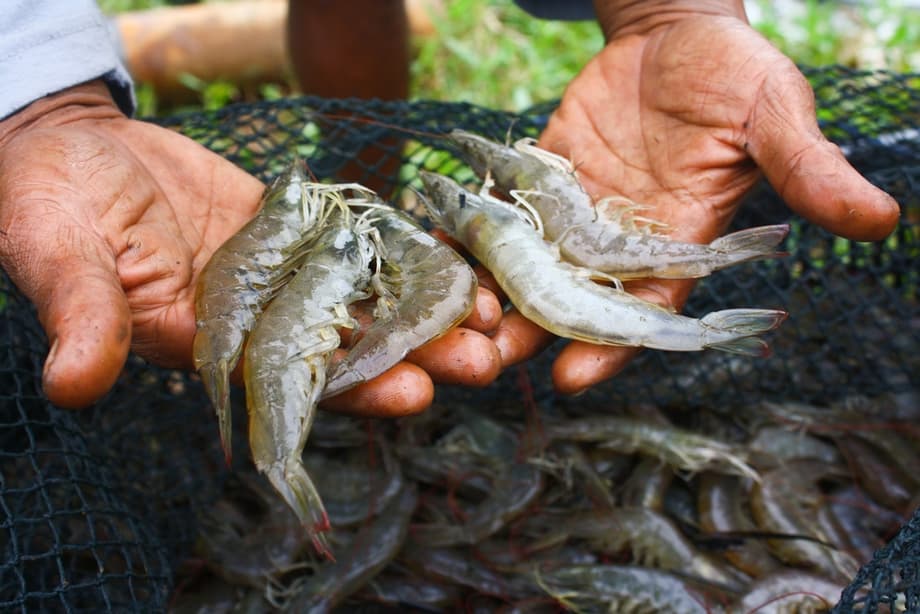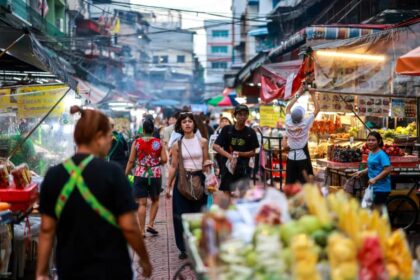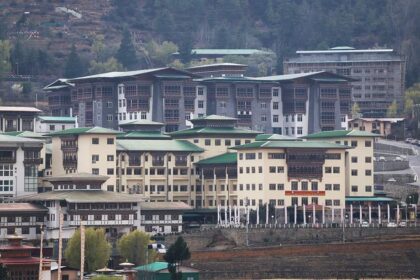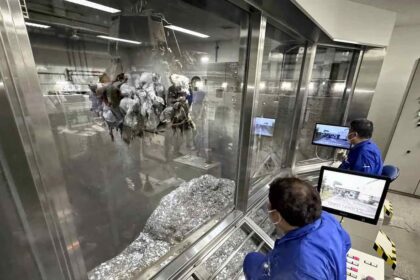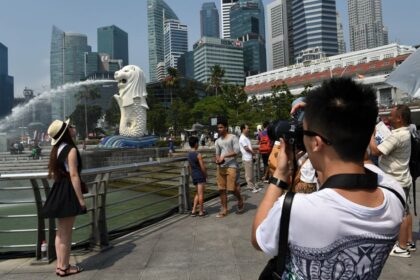Why US scrutiny rose on Indonesian shrimp
Indonesia is pushing Washington to remove dozens of its shrimp processors from a US Food and Drug Administration yellow list that flags goods for extra scrutiny. The request follows a scare over radioactive Cesium 137 that briefly disrupted sales in the country’s top seafood market. In August, the FDA detected the radionuclide in one frozen shrimp sample linked to PT Bahari Makmur Sejati, a processor in Cikande, Banten. The agency blocked BMS shipments. It also placed many other plants in Java and Lampung on a watch list that requires stronger controls. After new certification steps, Indonesia has restarted exports. Seven containers totaling 106 tons, worth about 1.22 million dollars, left for the United States between October 31 and November 4. Officials now target more than 200 certified containers in November as they work to calm buyers and restore normal trade.
Under the yellow list, shipments from the affected regions can enter the US only with a government certificate that proves the product is free of Cs 137. The Ministry of Marine Affairs and Fisheries quality assurance agency issues shrimp certificates, and the national food and drug agency issues certificates for spices. The United States is Indonesia’s largest buyer of fishery goods. From January through September, fishery exports to that market reached nearly 1.5 billion dollars. Shrimp are a core earner. Indonesian regulators say strict compliance, transparent tests, and quick coordination are central to rebuilding buyer confidence and convincing the FDA to lift enhanced surveillance.
What the FDA yellow list means
The FDA set the requirements through an import alert that allows the agency to demand import certification from regions linked to contamination risks. The alert covers shrimp and spices from the Island of Java and Lampung Province on Sumatra. It names two types of lists. The red list covers firms for which the agency has evidence of Cs 137 contamination. The yellow list covers foods from areas where contamination has been documented. Foods on either list move only with extra controls. The agency designated certifying entities in Indonesia to review shipments and issue the papers that prove absence of contamination. For shrimp, the certifier is the Ministry of Marine Affairs and Fisheries Quality Assurance Agency. For spices, it is the National Agency of Drug and Food Control known as BPOM. Details are posted in the FDA import alert, which is available to the public here.
Red list vs yellow list
- Red list: the FDA has evidence that a specific firm shipped product containing Cs 137. Shipments are detained without physical examination. Removal requires a certification audit by an FDA accredited third party to prove controls are in place. Even after removal, shipments remain subject to yellow list rules until the risk is resolved.
- Yellow list: applies to certain foods from Java and Lampung. Every shipment must carry a certificate from a designated Indonesian government entity that verifies the lot is free of Cs 137. Shipments that arrive without proper certificates can be refused entry.
The alert requires firms to notify the FDA of operational changes or incidents that could raise contamination risk. The agency can refuse any certificate it deems inaccurate or unreliable. Products detained under this rule are not eligible for reconditioning. The FDA also explains its actions on a dedicated page on cesium 137 in imported foods, which can be read here.
Indonesia’s response and certification drive
Jakarta is trying to turn a compliance burden into a reassurance campaign for buyers. The fisheries quality agency is issuing Cs 137 free certificates for shrimp bound for the United States. The process uses the existing fisheries product quality certificate with an added radiation free statement. Regional offices issue the documents once exporters submit supporting lab results. The national nuclear regulator Bapeten and the National Research and Innovation Agency known as BRIN support the checks with radiation portal monitors and laboratory analysis.
Regulators report that the first wave of seven certified containers cleared US entry checks at the end of October and early November. The fisheries ministry says hundreds more shipments from Java and Lampung are preparing to follow in November as processors complete scans and paperwork. Officials are also working to integrate databases with US authorities so inspectors can verify certificates quickly at the border.
Firms with confirmed contamination face tougher hurdles. PT Bahari Makmur Sejati remains barred while it implements corrective action and undergoes an audit by an FDA accepted third party. A spice exporter that shipped contaminated cloves faces similar constraints. Once removed from the red list, these firms must still provide shipment specific certificates under the yellow list until the risk is closed.
New testing and lab capacity
To sustain checks at scale, the fisheries ministry plans to commission four radionuclide testing laboratories by the end of 2025. The first facility in Cilangkap in East Jakarta is expected to come online sooner, with equipment already ordered. Additional labs are planned in Surabaya in East Java, Makassar in South Sulawesi, and Medan in North Sumatra. The ministry says a larger domestic testing network will speed results for exporters, reduce bottlenecks, and help keep containers moving.
Trade stakes and market impact
The United States is Indonesia’s biggest seafood buyer, followed by China. Through September, fishery exports to the US reached nearly 1.5 billion dollars. Shrimp contribute roughly one third of total fishery export value, and the US is the largest single destination for shrimp by value. That dependence makes any disruption costly for processors and farmers across the supply chain.
Industry groups say the abrupt shift to preshipment radiation documents left many firms waiting on procedures, equipment, and test slots. Processors in Java and Lampung faced weeks of uncertainty as agencies finalized protocols and integrated systems with US authorities. The delay idled capacity and forced companies to hold product in cold stores, raising costs and straining cash flow. Exporters warn that buyers can quickly switch to suppliers in India, Vietnam, or Ecuador when deliveries are not reliable.
Officials have tried to limit fallout by waiving certificate fees and by deploying joint teams to audit plants, validate clean production lines, and fast track laboratory work. The resumption of shipments suggests the backlog is beginning to clear. Indonesia also plans to request FDA on site reviews once quality controls are steady, with the goal of removing yellow list conditions and restoring routine trade.
What is Cesium 137 and how can it reach food
Cesium 137 is a radioactive isotope created in nuclear fission. It entered the environment through atmospheric nuclear tests and through accidents such as Chernobyl and Fukushima. Cs 137 emits gamma and beta radiation. The isotope has a half life of about 30 years, which means traces can persist for decades in soil and water unless removed by cleanup or dilution. The element behaves in ways that allow it to move through ecosystems and settle in plants and animals.
The FDA notes that the isotope can enter food pathways when contaminated materials make contact with equipment, water, or ingredients in the supply chain. The risk to consumers depends on how much radiation is present and how much food is eaten over time. The agency uses a derived intervention level of 1200 becquerels per kilogram for cesium in food as a trigger for action. Indonesian health authorities warn that short term exposure can cause nausea, diarrhea, and headaches, while very high exposure can lead to severe health effects including organ damage. Regulators in both countries say no product that tested positive for Cs 137 entered the US market.
The investigation: factories, scrap metal and cleanups
The contamination that triggered the alert was linked to an industrial estate in Cikande near Serang in Banten, where BMS processed shrimp. Indonesia’s nuclear regulator and a special task force inspected facilities, collected soil and surface samples, and began decontamination where needed. The government tightened controls on scrap metal streams while it traces the source of the radionuclide and checks whether contaminated materials entered any production line.
Investigators point out that Indonesia has no nuclear weapons or nuclear power plants. The working theory is that contaminated industrial inputs, possibly metal, entered equipment or packaging lines and left residual material in specific locations. Teams are expanding environmental sampling to map any remaining hot spots and to confirm that food production areas are clean. Plants that show any contamination must complete cleanup steps and pass verification before resuming exports to the United States.
Can Indonesia get off the yellow list
Removal from the yellow list will take more than a few clean shipments. The FDA will wait until the contamination risk is resolved and controls are reliable. That means stable processes at plants, a robust certification system, credible oversight by Indonesian authorities, and accurate documentation. The import alert allows the agency to refuse certificates it considers incomplete or unreliable, so quality of recordkeeping matters as much as the test result itself.
Jakarta is trying to meet those benchmarks with integrated databases, routine scans at ports, clear audit trails, and new laboratory capacity. Once those steps are in place and verified, Indonesia plans to invite US inspectors for on site reviews. If the agency accepts the safeguards, shipments from Java and Lampung could return to normal without preshipment certificates. For now, Indonesia is using the certification drive to keep shrimp moving to its top market while pressing for an early end to yellow list status.
Key Points
- FDA detected Cesium 137 in a shrimp sample in August linked to a plant in Banten, then blocked that firm’s shrimp and required certification for shipments from Java and Lampung starting October 31.
- About 41 shrimp processing units in Java and Lampung were placed on the yellow list, which requires a government certificate for each shipment. PT Bahari Makmur Sejati and a clove exporter were put on the red list.
- Indonesia resumed exports after certification steps. Seven containers totaling 106 tons and 1.22 million dollars departed between October 31 and November 4, with more than 200 containers targeted in November.
- The fisheries quality agency KKP is the designated shrimp certifier and BPOM handles spices. Certificates are free, though exporters may pay for laboratory tests.
- Indonesia plans to build four radionuclide testing laboratories by the end of 2025 to strengthen capacity.
- Regulators say no product that tested positive entered the US market.
- The US is Indonesia’s top fishery market and shrimp are a core export, with fishery sales to the US near 1.5 billion dollars through September.
- Jakarta seeks removal from the yellow list after controls are in place and after on site verification by US inspectors.


